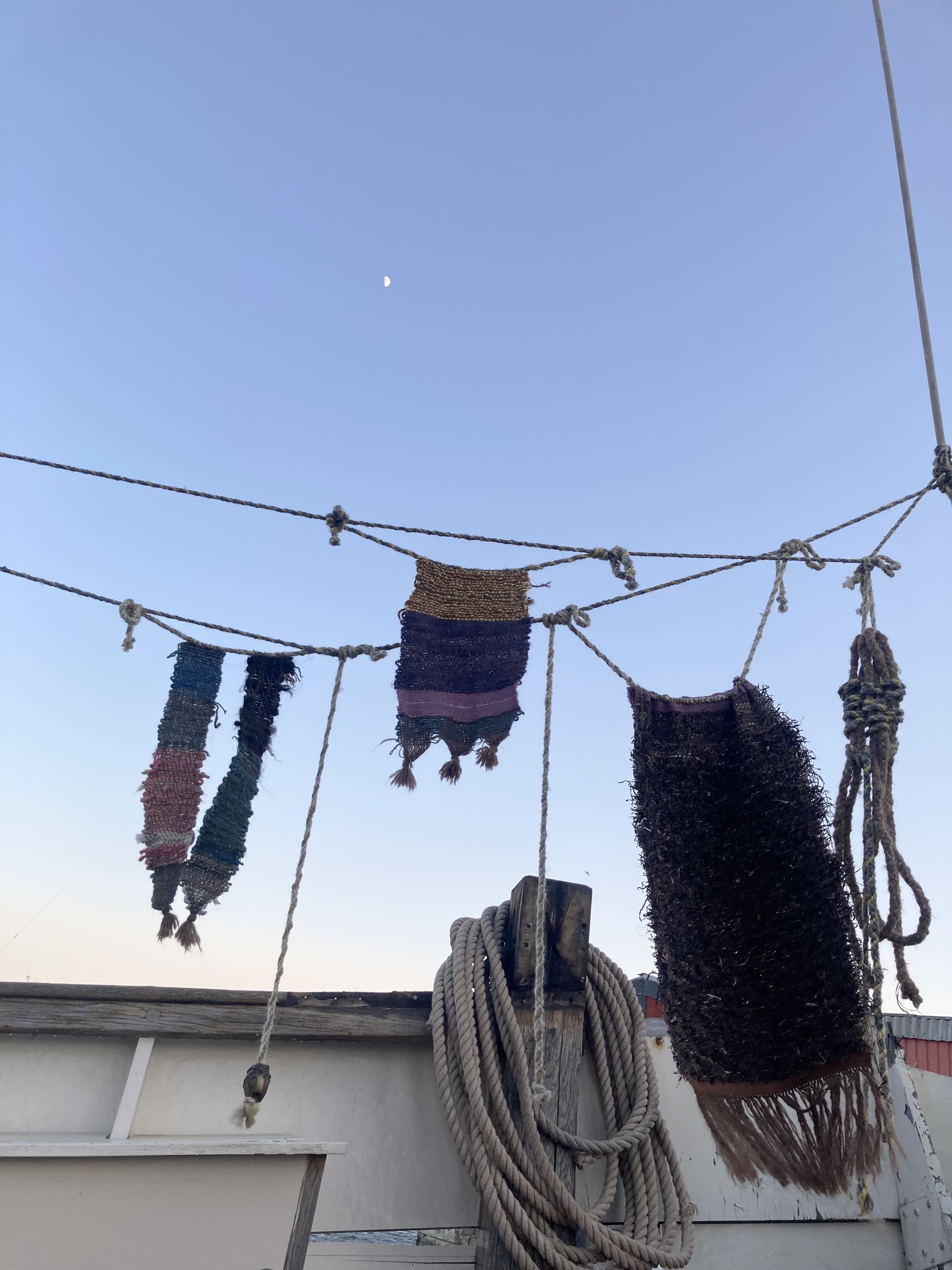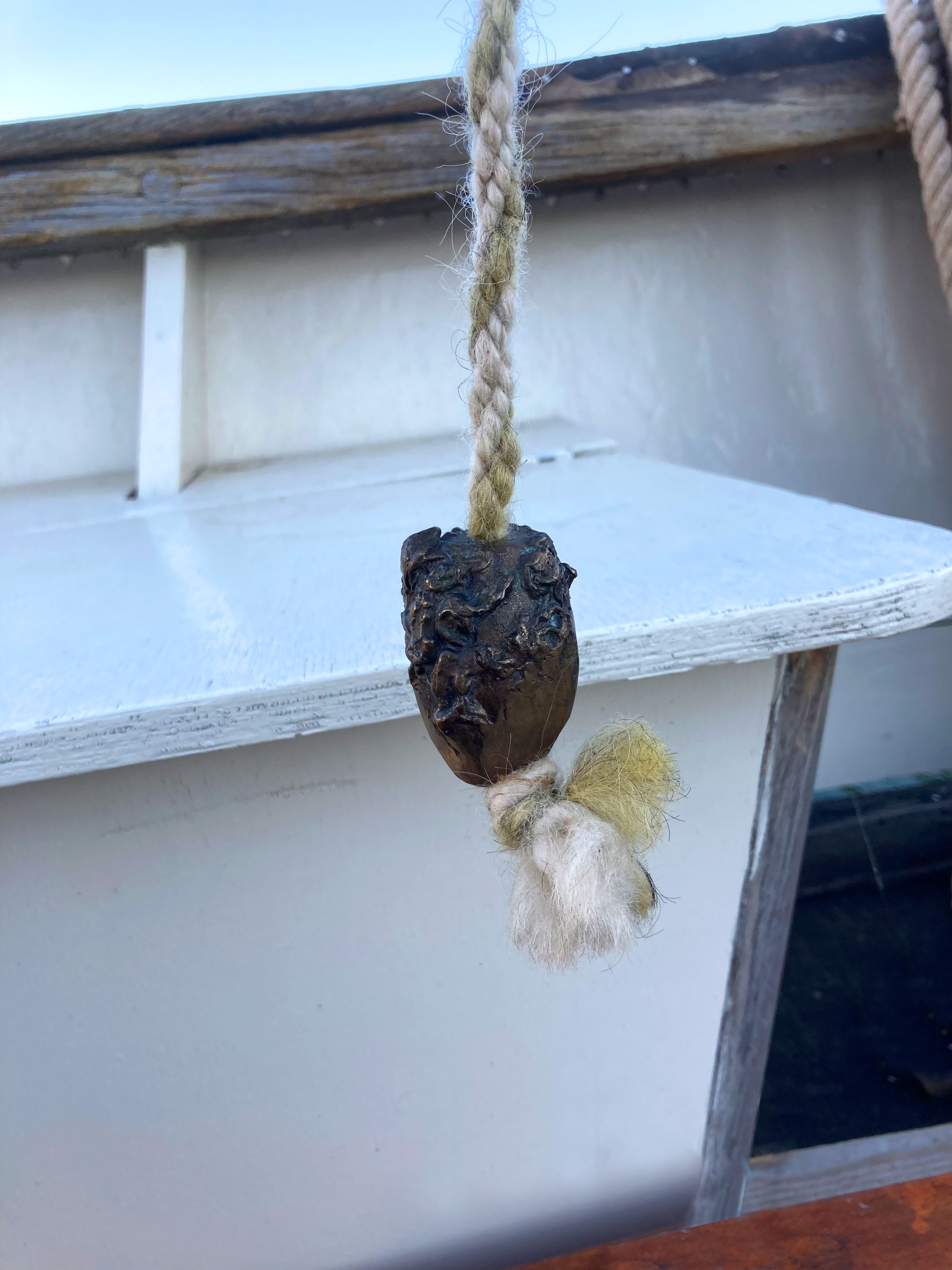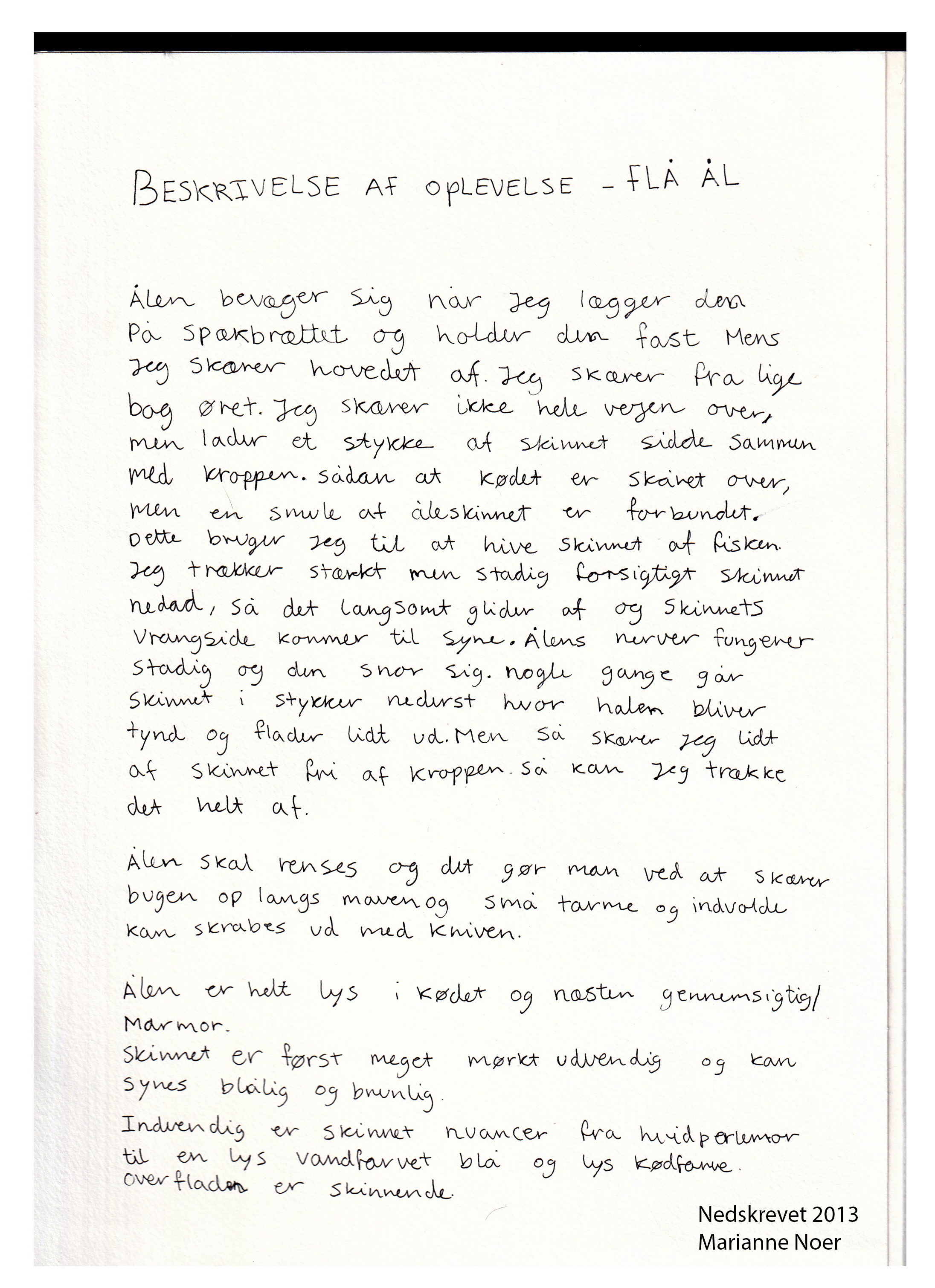
My Grandad Caught Eel
Childhood memories related to familie ties to the fjord and fishing. In a time of loose of species and live in the danish fjords.
Outtake from writing exhibited with the woven works:
”It is by the fjord on the small Limefjord island, Jegindø. Where the old fishing hut still stands a stone’s throw from the water. The place where my grandfather Jens taught my father to clean eels. A grandfather who died before I was born. My father passed the craft on to me in my childhood. How to skin and clean the eels we caught, with my hands and a short sharp knife.
A knowledge that is put on hold. Because the European eel is rare (endangered). The fjord is no longer a good habitat for it. Together with the absence of other species, it seems so quiet today under the water’s surface. Except for the new species that have found their way to the deserted sandy bottoms. Enclaves of voluminous Pacific oysters live close to the shoreline, many times larger than the flat Limfjord oysters they have displaced.”
Year 2024
Exhibited at the ship Svartlöga, Grenaa(DK)
Curated by Oxer and Hostinglands (Laboratoriet for æstetik og økologi)
Supported by:
Bikuben Fonden
Statens Kunstfond (The Danish Arts Foundation
VAK (Vestsjællands Arbejde Kunstnerværksted & the ropemakers from Hjerl Hede
Exhibited at the ship Svartlöga, Grenaa(DK)
Curated by Oxer and Hostinglands (Laboratoriet for æstetik og økologi)
Supported by:
Bikuben Fonden
Statens Kunstfond (The Danish Arts Foundation
VAK (Vestsjællands Arbejde Kunstnerværksted & the ropemakers from Hjerl Hede
Installation of:
Ropes made from spælsau wool
Floaters cast in Copper at VAK (Vestsjællands Arbejdende kunstnerværksted)
Woven works made with handspun wool (plantdyed) and Eelgrass










Description of Experience - Skinning an Eel
Written 2013 - Marianne Noer
The eel moves when I place it on the Chopping board and holding it firmly while I cut off the head. I cut from just behind the ear. I don’t cut all the way through, but leave a small bit of the skin attached to the body. So that the meat is cut through, but a bit of the eel skin is attached. I use this to remove the skin from the fish. I strongly but still carefully pull the skin downwards so that it slowly slides off and the wrong side of the skin is visible. The eel’s nerves are still working and it wriggles. Sometimes the skin breaks at the bottom where the tail becomes thin and flattens out a little. But then I cut some of the skin off the body. Then I can pull it off completely.
The eel must be cleaned and this is done by cutting open the belly along the stomach and small intestines and entrails can be scraped out with the knife. The eel is completely light in flesh and almost transparent/marble.
The skin is first very dark on the outside and can appear bluish and brownish.
Inside: the leather shades from white mother-of-pearl to a light aqua blue and light flesh color. The surface is shiny.
![]()
Written 2013 - Marianne Noer
The eel moves when I place it on the Chopping board and holding it firmly while I cut off the head. I cut from just behind the ear. I don’t cut all the way through, but leave a small bit of the skin attached to the body. So that the meat is cut through, but a bit of the eel skin is attached. I use this to remove the skin from the fish. I strongly but still carefully pull the skin downwards so that it slowly slides off and the wrong side of the skin is visible. The eel’s nerves are still working and it wriggles. Sometimes the skin breaks at the bottom where the tail becomes thin and flattens out a little. But then I cut some of the skin off the body. Then I can pull it off completely.
The eel must be cleaned and this is done by cutting open the belly along the stomach and small intestines and entrails can be scraped out with the knife. The eel is completely light in flesh and almost transparent/marble.
The skin is first very dark on the outside and can appear bluish and brownish.
Inside: the leather shades from white mother-of-pearl to a light aqua blue and light flesh color. The surface is shiny.

